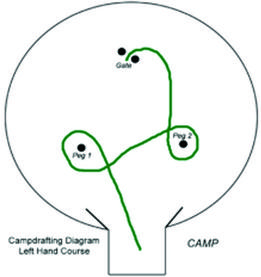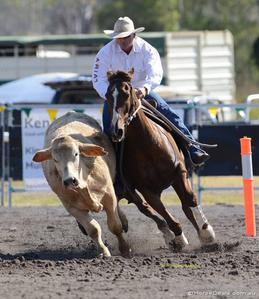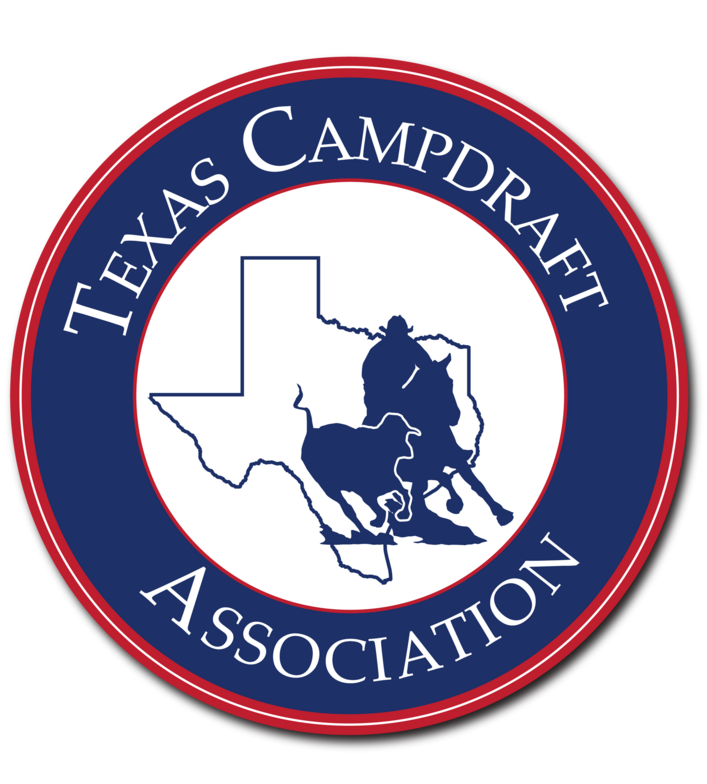Texas Campdraft Association
We would love to hear from you.
Campdrafting originated in the open country of Australia, where the working cowboy’s (or Ringer, as they were called) job was to inspect the cattle herd and separate out those animals in good enough condition to sell. Those cattle were usually free roaming in a 5,000 acre pasture, and were called “clean skins” because they had never been worked or branded. There were no holding pens, no alleys and no squeeze chutes to help direct the cattle or confine them. The cattle were moved to a corner of the pasture and held in place by several riders. The foreman directed a rider to select certain animals and they were cut from the herd and moved to a distant area where they were held by other riders. To excel in the work a cowboy needed a quick, savvy horse who could read cattle well enough to cut one from the herd and then match its evasive maneuvers as it was directed to a new location. When a cowboy found a good horse it was his prized possession, and he was likely to brag about it. Put enough cowboys together, each saying that they have the best horse in the business, and a competition is born.
The sport of campdrafting is designed to mimic the moves the Australian stockman would need to use working cattle on the open range, or “bush”. The original competitors horses would have worked all week on cattle, then been ridden to a local gathering to match their skills against the best horses of the neighboring ranches, or “stations”. In this way work became a sport, and in today’s campdrafts the entire family may compete on one horse- each riding in a different division.
Divisions are determined by the competitors age and skill level, with juniors, ladies, first time competitors and experienced winners each being slotted into the appropriate level.
Campdrafting involves a mounted rider riding into a “camp” (round pen) which has six to eight head of cattle in it. The rider cuts out one steer or heifer from the cattle in the camp and brings the animal to the front of the pen, then blocks and turns the steer at least two or three times to prove to the judge that they have the steer under control. The rider then calls for the gates to be opened into the arena.
As the steer bolts for the open space of the arena the rider proceeds to draft (guide) the animal through a course around pegs involving right and left hand turns in a figure eight, before guiding it through two pegs known as “the gate”. If the steer will not be readily persuaded into making any particular turn, he may then be “shouldered” into position by the horse pushing him in the right direction. The outside course must be completed in less than 40 seconds.
Once the steer is gated, the campdraft is complete and the rider can be awarded up to a total of 100 points. Points are awarded for horsemanship and control of the cattle. The pen cut out is worth a total of 26 points, horse work up to a further 70 points and up to 4 points are awarded for the course.
Disqualifications (signaled by a crack of the judge’s stockwhip) occur when a competitor:
• loses their steer more than twice in the camp,
• loses control of the steer in the arena,
• runs a steer into the arena fence,
• the rider’s horse “tail turns” - turns in the opposite direction of the steers line of travel at any time in the draft.
About Campdrafting
Contact us if you have any questions about the sport or upcoming events.
Liz Pohl: 830-238-3169, cell 830-329-2920 • Kellee Campbell: 512-762-3498





